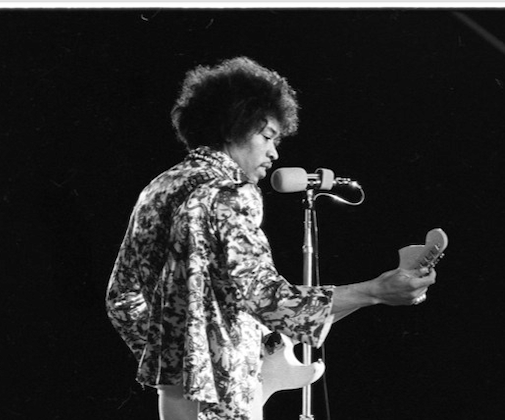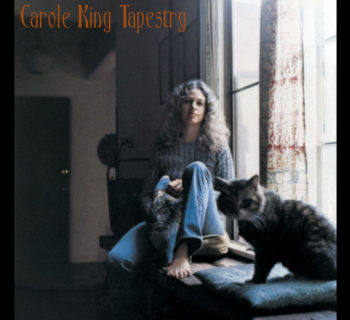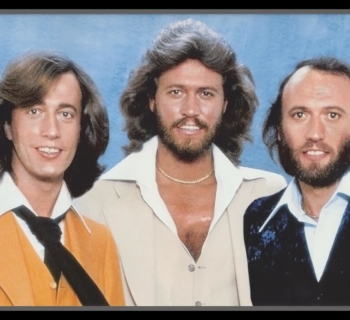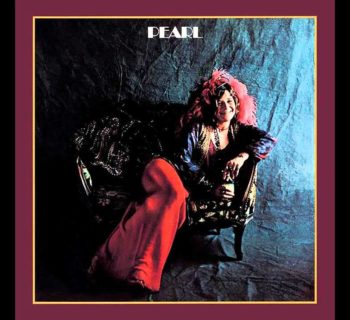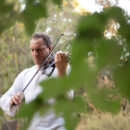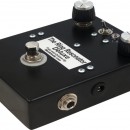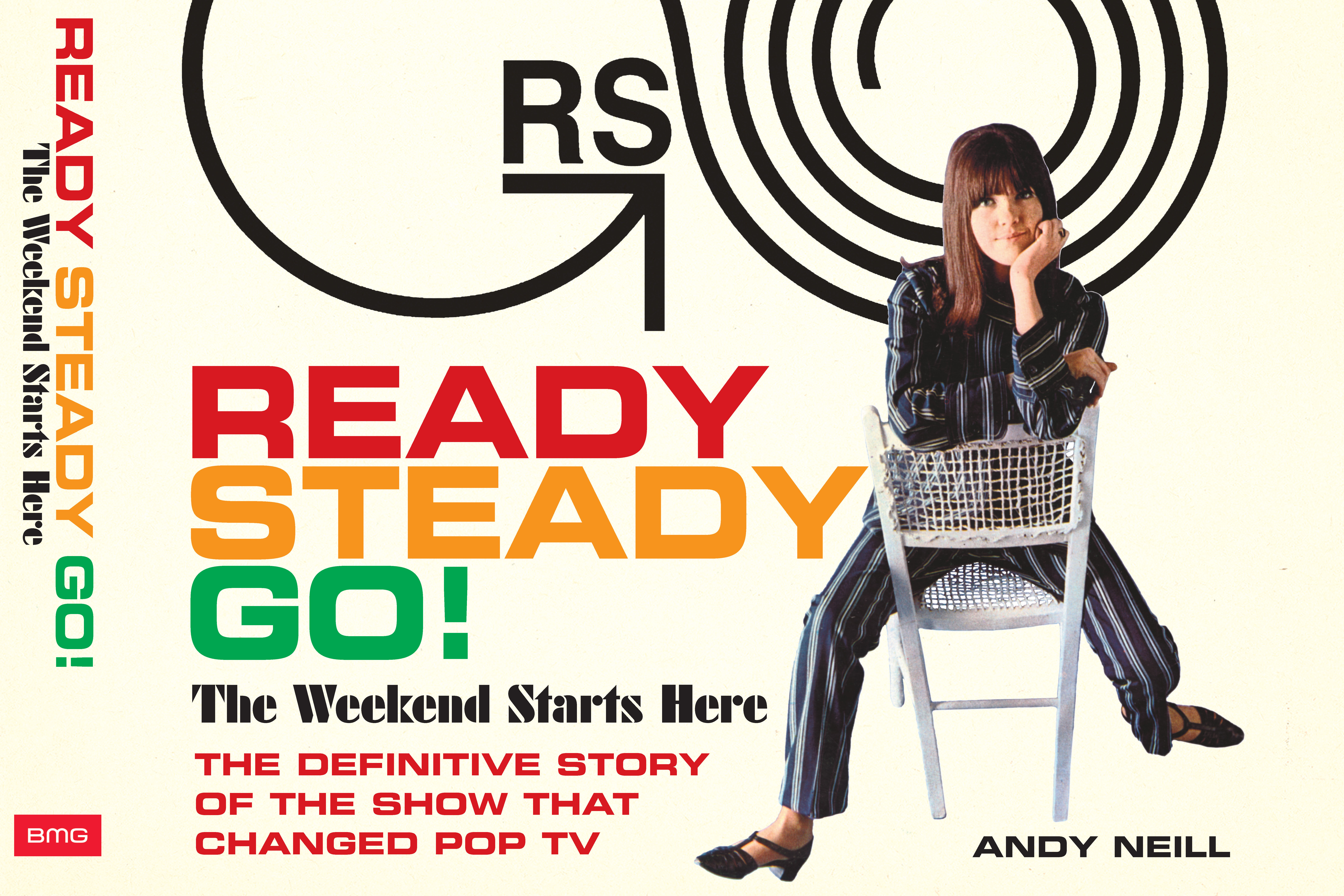Experience Hendrix, L.L.C. in partnership with Legacy Recordings, a division of Sony Music Entertainment, recently released Jimi Hendrix Experience: Hollywood Bowl August 18, 1967 on vinyl, CD and all digital platforms.
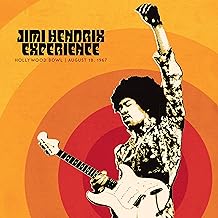
This live concert performance, captured just five days before the US release of Are You Experienced, their album debut, is notable for being one of the last times the band performed in front of an audience as relative unknowns. Having already conquered the band’s UK base as well as Continental Europe over the previous ten months, the vast majority of the 17,000 plus Southern California concert goers were there to see headliners the Mamas & the Papas and were caught off guard by Jimi Hendrix’s electrifying musicality and showmanship. The authorized set can be enjoyed for the first time ever; amazingly, not a single second of this unique, two-track live recording has ever been released before in any capacity, either via official channels or elsewise.
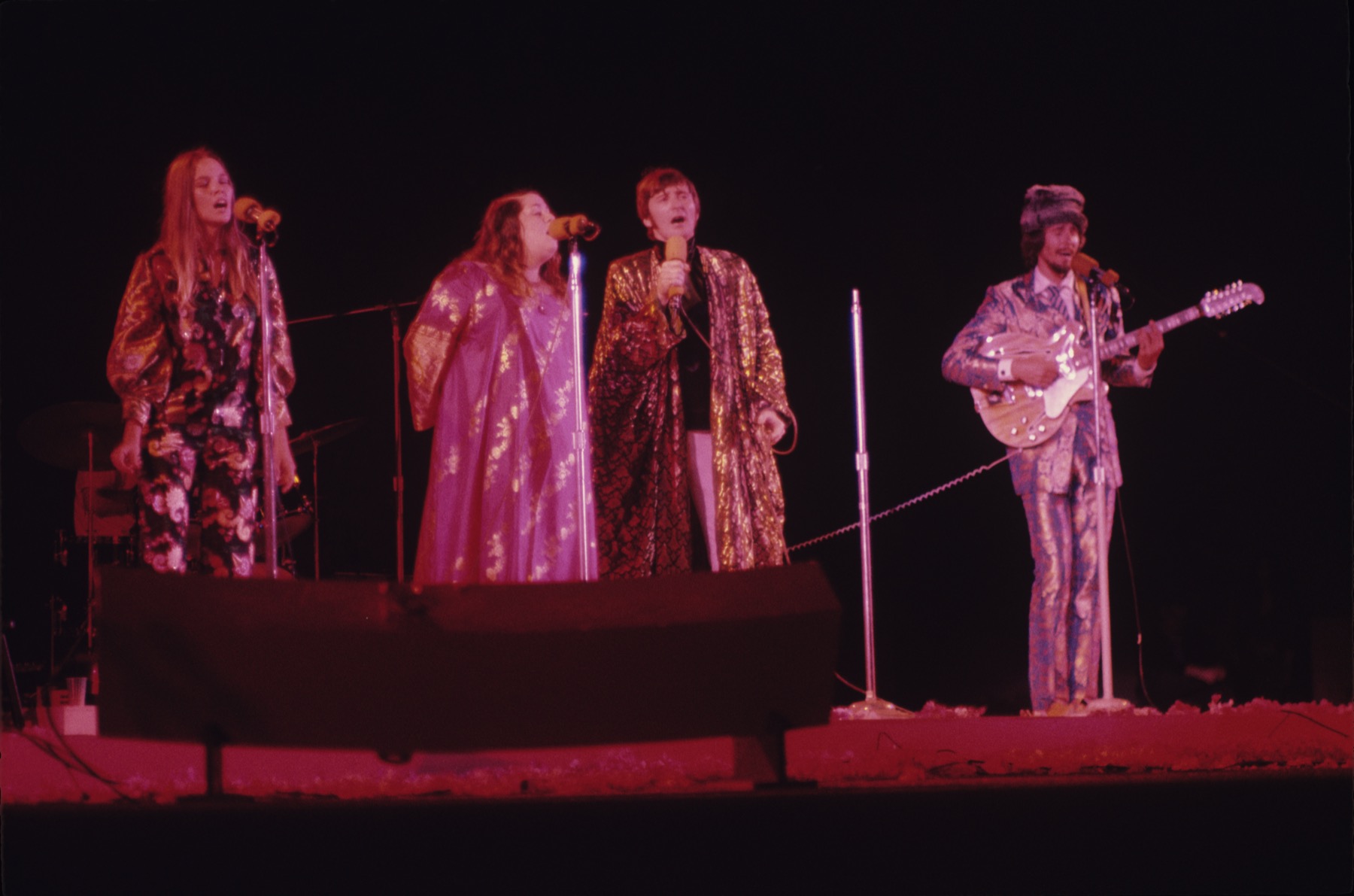
In a 2007 interview I did with Michelle Phillips of the Mamas & the Papas, she reflected on Hendrix’s culture-shaping performance at the landmark June 1967 Monterey International Pop Festival where the Jimi Hendrix Experience debuted in the US.
“Jimi Hendrix…I was so embarrassed and shocked. I had never seen anyone so sexually explicit on stage. I had never seen anybody treat their axe like that. We were always so careful about our instruments and when we traveled, we had the guitars in the plane with us. And then to see set fire to the guitar and to slam it to bits on the stage was very upsetting to me. It was a form of expression that I was not prepared for.”
“Monterey was a watershed moment for something very big, more than rock music, entertainment, or even culture,” enthused novelist Daniel Weizmann.
“It was the tipping point for a new kind of consciousness. I believe the Shechinah was in the air in California in those years, the ‘dwelling place’ of divine energy, it’s feminine aspect according to Kabbalah, and so many elements of everyday life were evolving at a rate nobody could keep track of. The music was incredible but the music was more than electric sound, more than stimulation. It was a delivery system for a new feeling about living, a new way of being really. Dig it—these people, on the stage and in the audience, were children of the soldiers that stopped Hitler, this was ‘the love crowd,’ like Otis says. It was no accident, no coincidence. They were saying ‘We have a better way. We have the antidote.’”
“Monterey,” offers Dr. James Cushing, “we all accept it as the ‘first rock festival,’ but in some ways, it was the last -- in the sense that it was truly festive, with that festive pastoral spirit that puts feeling first, profit last. All the people were festive, and nobody got hurt. All the big festivals that followed were variations on controlled disaster, like Woodstock or the Isle of Wight, or uncontrolled, in the cases of Altamont or the Isle of Fehmarn.
However, the immediate prosperity the band enjoyed in the UK was not replicated in the US.
“Their first two US singles were flops – “Hey Joe” didn’t chart at all, “Purple Haze” only reached #65 – and Are You Experienced wouldn’t be released domestically until late August.
In their attempt to crack America, the Experience did a five-show stint at the Fillmore in San Francisco followed by a US trek opening for the Monkees. “After seeing Jimi at Monterey, I suggested him for our 1967 tour,” recalled Monkees’ co-founder Micky Dolenz in a 2008 interview we did. “I had seen Jimi as Jimmy James at a Village club in New York during 1966. At Monterey I immediately realized it was the same guy! “I remember after the Hendrix Monterey show that night, I ended up somehow as this sort of mascot to Jimi and God knows who else. I had acquired instruments, amps, guitars and a generator for electricity, and long after the show was over, and the event had essentially ended, everybody was so pumped up it was tough to go away. And there wasn’t anybody who was forcing anyone out of the area. It was this ongoing kind of buzz that was happening, and people would gather in little groups and corners and tents, and keep going. “There were jam sessions. I fell in with Jimi. And I sat there with a lot of other people, I wasn’t playing, there was no drum set, and people were playing on their knees. It was like ‘Kumbiah’ in a psychedelic way. We all sat there for hours until the morning. Somehow, I got the idea, and everyone was hungry and thirsty, maybe it was the Boy Scout in me, but I wanted to contribute to the vibe, and I went out of the tent and somehow finding a case of oranges. “I lugged this entire case of oranges back to the camp, the tent, and started giving out oranges, like I was ‘Little Johnny Orange Seed.’ I think I might have also heard at the time that oranges, or orange juice were helpful after an indulgence of chemicals…(laughs). I later crashed out at the Carmel Inn.” Hendrix and Co. only lasted nine dates before dropping off due to unappreciative teenybopper audiences who were strictly there to see the headliner.
In a scramble to book dates after this debacle, John Phillips of the Mamas and the Papas, who with Lou Adler co-produced the Monterey international Pop Festival, invited the Experience to open for his group at the Hollywood Bowl on August 18.
John York played bass in the road band for the Mamas & the Papas. During 1968-1969 he was a studio and touring member of the Byrds. I interviewed multi-instrumentalist York in 2020 for Jimi Hendrix: Voodoo Child.
“I had my ‘Jimi Hendrix Day’ in my life…
“I was playing bass for the Mamas & Papas in summer of 1967, including an August concert at the Hollywood Bowl. John Phillips, God bless him, had Jimi open the show. There was a middle act of a Beethoven string quartet. The drummer was Eddie Hoh and the guitar player was Eric ‘Doctor’ Hord in the Mamas and Papas. We all were at the sound check in Hollywood on a beautiful summer’s day. What struck me was that Jimi was a very shy guy.
“Everything he had to do at the check was very gentlemanly. Every way he went he would be followed by half a dozen hippie chicks. If he was standing on one side of the stage they would go sit over there. And if he had to get up and go over to the other side of the stage, they would all of them would stand up and go follow him there. They would never say anything and sort of competing with each other. We all got a kick out of that.
“In the evening, Denny Doherty and I walked to the very back of the Hollywood Bowl. To look down over the audience and can see the stage. All of a sudden Jimi went into his first song ‘Wild Thing.’ ‘Wow! What is this?’ He starts playing single notes that are so loud and so clear that it is heaven in the air. It was like you could see the notes hanging in the air. ‘Holy shit!”
“So, Denny and I went down immediately to the stage area, we had all access passes so we were able to go to the edge of the stage. And they had these tall trees on planters that were on wheels. One on each side. In one moment when the lights went dark between songs we ran up on stage and hid behind one of these trees.
“So, we were literally just a few yards from Jimi, Mitch and Noel. We stayed there for the whole set. We had never seen or heard anything like it. An amazing thing to experience. ‘Cause it was so early on nobody was jaded about this guy.
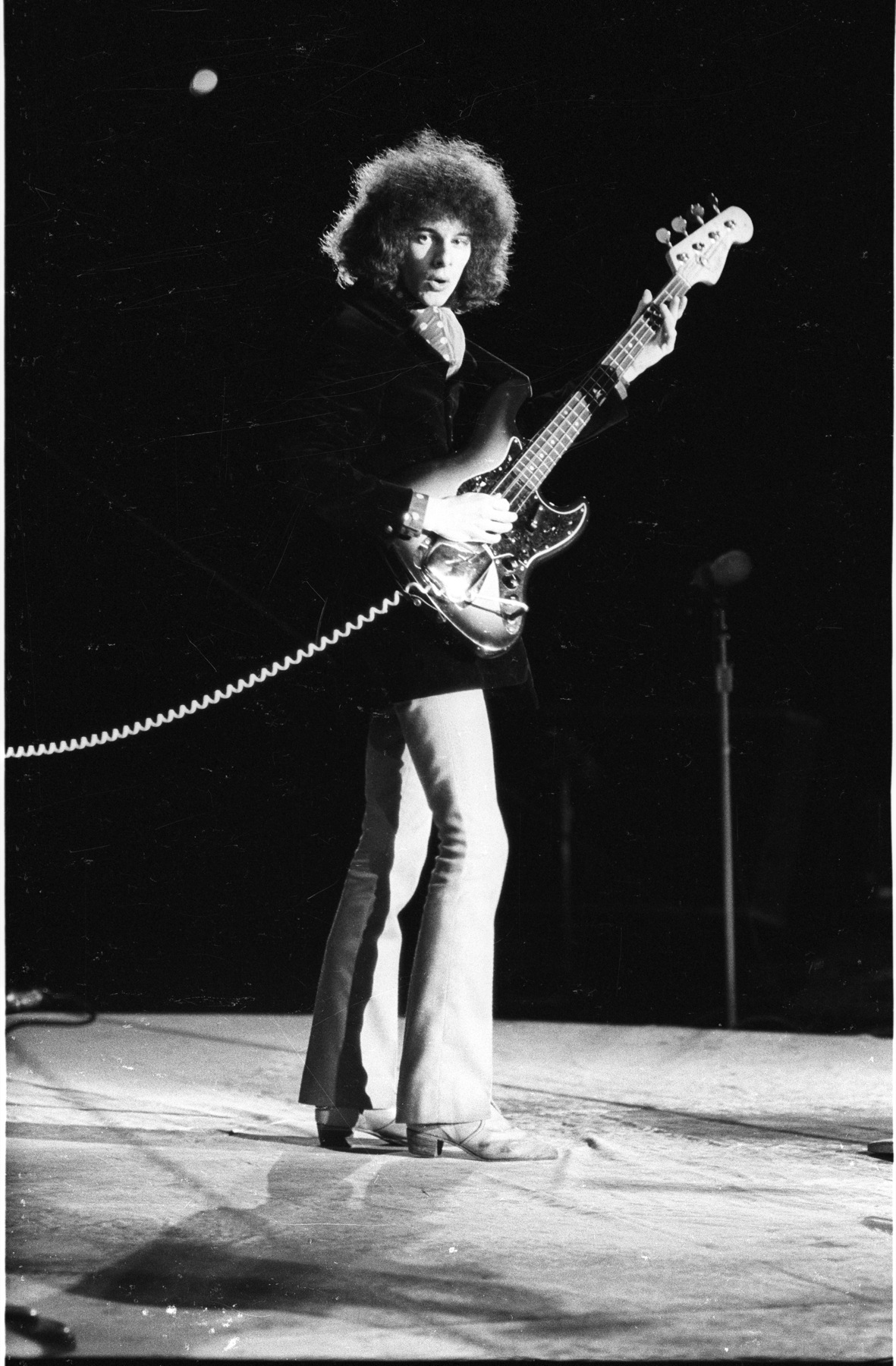
“His rhythm section was completely amazing. Each one was highly innovative and playing the way they wanted to play. I don’t know the dynamic of the band was. Or that if he told them to play anything in particular. The drummer obviously came from a jazz background. The bassist was a converted guitarist. In a trio that worked. Because there was no other guitar player. I mean, it was kind of the way Skip Battin played with the Byrds. Skip gave you a lot of information and it was going against the way bass players were supposed to play.
“Bass players were supposed to be almost invisible. Both those guys impressed me. The thing about it was that they were able to give Jimi what he needed. In order for him to float those notes, right? He needed these two guys who could make the background bubble and boil. They were on it every moment. They weren’t kicking back, being cool and letting him do everything. They were just churning under him so he was able to do whatever he needed to do without the energy dropping at all. It was remarkable. And at the time, 1967, this is new. And very creative. The thing that touches me the deepest about Jimi is his guitar playing. A level of artistry that he was able to reach that was overwhelming.
“The night of the Hollywood Bowl there was a big party at John and Michelle Phillips’ house in Bel-Air. The old Jeannete McDonald mansion. I had been there before. It was a party filled with people. There was a pool table and Jimi was sitting right next to me. Gradually people started speaking to Jimi.”
Robert Marchese caught Jimi, Mitch and Noel at their August ’67 Hollywood Bowl booking.
“When Jimi Hendrix opened for the Mamas & the Papas at the Hollywood Bowl on August 18, 1967, Mo Ostin and Joe Smith from Warner Bros. Records were sitting right in front of me. And beside them were two little white chicks, like ‘San Fernando Valley beach bunny blondes.’
“And Hendrix started playing, and believe me, when Jimi started playing, they started cumming in their pants. And, I leaned over into Mo’s ear and Joe’s ear, and said, ‘this is why you got millions of dollars staring you in your face. This is the first time these two chicks ever got turned on by a black cat. (Laughs). ‘He doesn’t carry a razor blade, plus he’s awfully good lookin’.”
“Jimi’s management and people on the road were really nice to me and I was always taken care of with backstage passes and dressing room access,” reiterated photographer Ed Caraeff to me in a 2020 dialogue.
“At the Jimi Hendrix Experience 1967 and ’68 Hollywood Bowl concerts I went with Rodney Bingenheimer.
“My philosophy and job was to blend into the room and getting out of the way. I didn’t wear loud clothes. Dark. No patterns. I never tried to get laid by bringing anyone or anybody. I never asked for an autograph or ticket. I usually shot behind the drums and amplifiers.
And I would always bring my camera. Jimi was a professional and at ease in public setting. Jimi could play the guitar like no one had ever seen. Behind the back, with his teeth and so effortlessly. His fingers seemed to be twice as long as anyone and he could wrap them around the guitar.
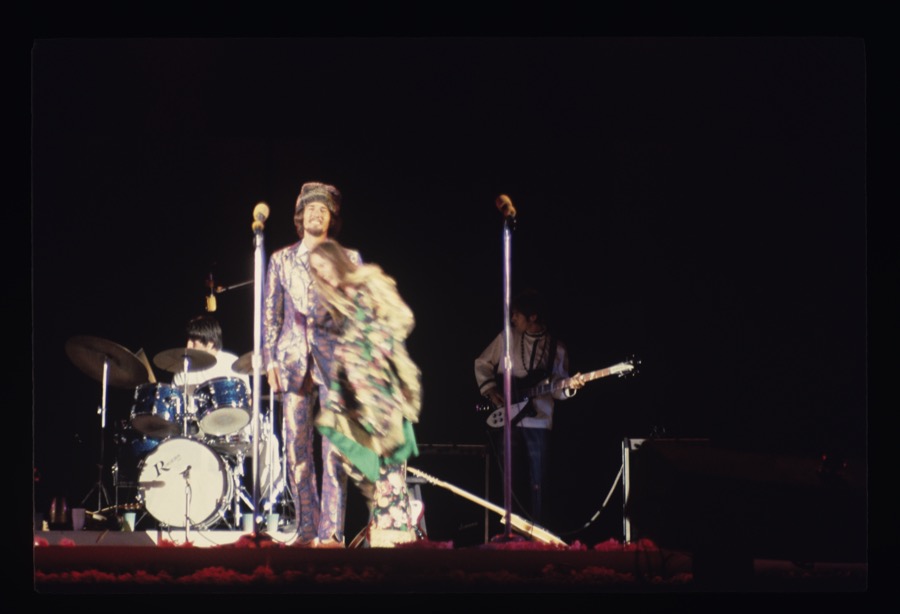
Photos by Henry Diltz, Courtesy of Gary Strobl at the Diltz Archives.
“Rodney and I after the ’67 Hollywood Bowl Hendrix show went to the home of John and Michelle Phillips in Bel-Air where Jimi and I shot a game of pool.”
“The Jimi Hendrix Experience Live at the Hollywood Bowl August 18, 1967 is a major event for Hendrix fans and for anyone interested in the early days of psychedelia,” suggested Dr. James Cushing.
“The sound is clear hi-fi mono, taken I assume from the Bowl PA system, so the vocals are quite distinct, although the bass is a bit blurry.
“The crucial fact of the concert is that Are You Experienced? was not released in the US until September, so Jimi’s big hits are not yet hits; applause is muted, and no one recognizes ‘Purple Haze’ or ‘Foxy Lady.’
“In his spoken remarks, Jimi sounds a little dubious about the basic situation of playing at an 18,000 capacity amphitheater instead of the NY and London clubs he was accustomed to. ‘We’d like to continue on drearily with a song called ‘Foxy Lady,’ he mutters at one point; he prefaces ‘Purple Haze’ with ‘we’ve got two more records to do, thank God.’ He may be responding to the lack of enthusiasm from the Bowl crowd that’s mainly there for the Mamas & Papas. No offense to Denny, John, Michelle, or Cass, but their Andrews Sisters / Four Freshman harmony vocal sound was based in pop and represented the comfortable past, while Jimi was based in blues and represented the challenging future.
“The billing was essentially a mismatch -- not as bad as the aborted tour with the Monkees, but close.
“The contrast between this performance and the one made two months earlier at Monterey is instructive. Monterey was a sparkling hippie dream which encouraged Jimi’s apotheosis. The Bowl is old-time show business, in which Jimi was an opening act. A year later, Jimi played the Bowl again from a position of stardom. He spoke and played as though he owned the place; in 1967, he sounds like a guest unsure of his welcome.
“For me, the highlight of the concert is the 8-minute performance of Muddy Waters’ ‘Catfish Blues,’ a-k-a ‘Rollin’ Stone,’ ‘Still a Fool,’ or ‘Two Trains Running.’ Jimi’s blues solo is his longest and most adventurous of the evening, especially when he turns on the wah-wah pedal, and Mitch Mitchell displays his allegiance to Elvin Jones.”
A September 2023 announcement from Legacy Recordings touts the Monterey Pop To The Hollywood Bowl and a new mini-documentary which details Jimi Hendrix's tumultuous journey upon his return to the US in June 1967, through August of that year.
“It features new interviews from the Mamas & the Papas vocalist Michelle Phillips, longtime Paul McCartney guitarist Brian Ray and others, the impact of Hendrix's Hollywood Bowl performance by eye witnesses is discussed, and is placed in historic context.
“The Jimi Hendrix Experience blazed through originals such as “Purple Haze,” “The Wind Cries Mary,” and yet-to-be-released classics “Foxey Lady” and “Fire,” as well as their own re-imagining of favorites by The Beatles (“Sgt. Pepper’s Lonely Hearts Club Band”), Howlin’ Wolf (“Killing Floor”), Bob Dylan (“Like a Rolling Stone”), The Troggs (“Wild Thing”) and Muddy Waters (“Catfish Blues”). The majority of the crowd had purchased tickets months in advance to see The Mamas & The Papas and were wholly unfamiliar with the jarringly different Jimi Hendrix Experience.
“Brian Ray, longtime guitarist for Paul McCartney and Etta James, was among the audience members transfixed by what they witnessed.
‘“The audience was there to see The Mamas & The Papas,’ recalls Ray. ‘They haven't heard of Jimi Hendrix. I'd never heard of Jimi Hendrix, and he couldn't be more opposite of the Mamas & the Papas as an act, culturally, physically, in every possible way he was the opposite. Here comes this guy and there's only three of them on stage and they have these afros and these wild, ornate, very theatrical clothes. Jimi proceeds to shred, and it's loud but it's musical, and then it becomes so physical. He starts playing the guitar under his leg, and now it's behind his back, and now he's playing it with his mouth, and now he's on the ground on his knees and he's like humping it, and it, to me was mind blowing. It was sort of every human characteristic; it was beauty, grace, it was sexual, violent, gentle, it was just everything all at once in one band coming out of this one guy. I wouldn't say that the audience response was quite the same as the response I was having. My sister and I were going bananas, and the audience was like [soft clapping] and they were trying to figure it out.’
“However, bewildered the audience may have been, their brief tenure opening for the Monkees had hardened the group, and they leaned into their repertoire with ferocity.
“Backstage at the Hollywood Bowl weeks later, Phillips was won over by Jimi Hendrix.
‘“I absolutely loved him,” recalls Phillips in the liner notes for Hollywood Bowl August 18, 1967, penned by Jeff Slate.
“‘He was a gentleman, he was lovely, he was funny.’ She softened her view of ‘rock and roll theatre,’ which was somewhat antithetical to the more stayed and pitch-perfect folk tradition from which her group emerged. This very concert wound up being the Mamas & the Papas’ last, while the Experience’s star was rising; they would return to the Bowl the following year as headliners. Phillips remembers, ‘In a couple of days or months, Jimi Hendrix was the hottest thing happening.’”
The Experience Hendrix team of Janie Hendrix, John McDermott and Eddie Kramer prepared this album for its release. Kramer, Hendrix’s long standing recording engineer, recently restored the audio, and three-time Grammy Award winner Bernie Grundman served as mastering engineer.
“Jimi Hendrix Experience: Hollywood Bowl August 18, 1967 will be availableon CD as well as audiophile grade, individually numbered, 150 gram vinyl, complete with many previously unseen photos by Ed Caraeff, Henry Diltz and Allen Daviau from that night. These include performance shots as well as candid backstage images of band members co-mingling with the Mamas & the Papas, scene maker Rodney Bingenheimer and manager Chas Chandler.
Jimi Hendrix Experience: Hollywood Bowl August 18, 1967 track list:
Side One
- Introduction
- Sgt. Pepper’s Lonely Hearts Club Band
- Killing Floor
- The Wind Cries Mary
- Foxey Lady
- Catfish Blues
Side Two
- Fire
- Like a Rolling Stone
- Purple Haze
- Wild Thing
Jimi Hendrix: Guitar, Lead Vocals
Mitch Mitchel: Drums
Noel Redding: Bass, Backing Vocals
(Harvey Kubernik is the author of 20 books, including 2009’s Canyon Of Dreams: The Magic And The Music Of Laurel Canyon and 2014’s Turn Up The Radio! Rock, Pop and Roll In Los Angeles 1956-1972. He’s also written titles on Leonard Cohen, Neil Young, and 1967 A Complete History of the Summer of Love.
Sterling/Barnes and Noble in 2018 published Harvey and Kenneth Kubernik’s The Story Of The Band: From Big Pink To The Last Waltz. In2021 they wrote Jimi Hendrix: Voodoo Child for Sterling/Barnes and Noble. Harvey and Kenneth are writing a book for 2024 publication by Insight Editions, Images That Rocked the World (The Music Photography of Ed Caraeff). In 2014 they collaborated on The Illustrated History of the Monterey International Pop Festival published by Santa Monica Press.
Otherworld Cottage Industries in 2020 published Harvey’s Docs That Rock, Music That Matters.
His writings are in several book anthologies, including, The Rolling Stone Book Of The Beats and Drinking With Bukowski. Harvey wrote the liner notes to the CD re-releases of Carole King’s Tapestry, The Essential Carole King, Allen Ginsberg’s Kaddish, Elvis Presley The ’68 Comeback Special, The Ramones’ End of the Century and Big Brother & the Holding Company Captured Live at The Monterey International Pop Festival).

